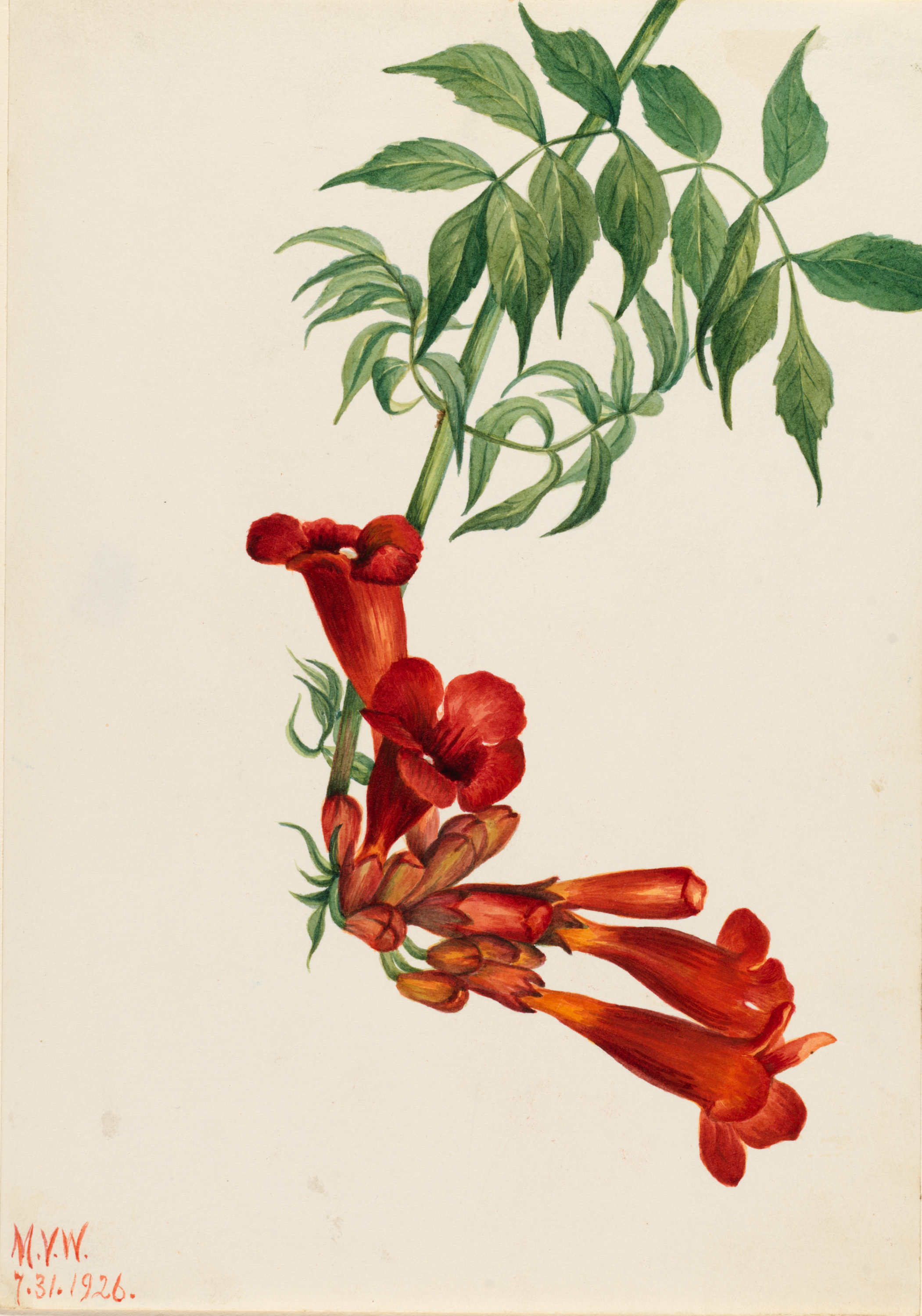I have accidentally been spreading some plant slander, and now it is time to apologize. Sometimes even we plant people get it very, very wrong! And so today’s post is all about Campsis radicans, aka the trumpet vine.

For years I have been railing against this plant.
“Ridiculously aggressive!”
“Impossible to get rid of!”
“It’s sold at these big box stores because they don’t care about the environment!”
While those things might be true in their own way, they leave out an important fact: It is NATIVE. Yes, Campsis radicans is a native vine that is found from Maine to Florida and west to Kansas. I have said many times that is was invasive, imported from far flung lands, and is a plague upon our forests. And boy was I misinformed. Remember, the word ‘invasive’ really should be reserved for non-native plants that have reproduced in and disturbed the local ecosystem. Aggressive is a better, more accurate way to describe a plant’s behavior if it spreads readily, but is native to our area. Invasive, as a horticultural term, means something about its origins and introduction into a new place.

Many Good Traits
This plant blooms July through August, attracting a whole host of long-tongued pollinators. Blooms can be red to orange, and its slightly sweet scent is great for trellises near the patio. It grows quickly, so can create fast shade over a pergola. The foliage is attractive and lush, and serves as a host plant for several species of moth.

Some Not So Good Traits
My information about its origins was bad, but my warnings about its behavior were spot on. It is fast growing to a fault, and can be seen toppling fences and commandeering telephone poles. To keep this thing in control means relentless pruning. Growing right before your eyes, trumpet vine can easily climb 10 feet or more in a summer. It does not play well with others, and will send runner roots out into nearby garden areas. And don’t forget its seeds! A single pod can have 600+ seeds.
So, Campsis, I am sorry. You are a native vine with your own beautiful and ecosystem-sustaining qualities! Though I will still keep it out of my own garden, I can see it has a rightful place in a forest edge or hedgerow, and I will never call it invasive again!
